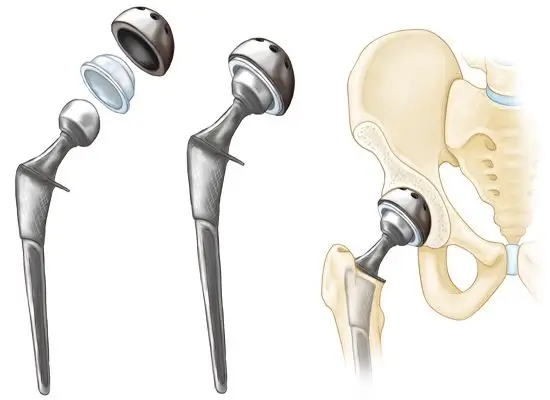Hip replacement surgery,also known as hip arthroplasty, is a surgical procedure in which a damaged or diseased hip joint is replaced with an artificial joint, known as a prosthesis. The hip joint is a ball-and-socket joint, and the surgery involves replacing the damaged or worn-out ball (femoral head) and socket (acetabulum) with prosthetic components to restore function and alleviate pain.
Here is an overview of the key steps involved in hip replacement surgery:
- Patient Evaluation: Before recommending hip replacement, the surgeon conducts a thorough evaluation of the patient’s medical history, physical condition, and imaging studies (such as X-rays) to assess the extent of hip joint damage.
- Anesthesia: The surgery is performed under anesthesia to ensure the patient is comfortable and pain-free during the procedure. The choice of anesthesia (general or regional) is typically discussed between the patient and the anesthesia team.
- Incision: The surgeon makes an incision over the hip joint to access the damaged joint components. The size and location of the incision can vary based on the surgical approach chosen by the surgeon.
- Removal of Damaged Tissues: The damaged femoral head and damaged cartilage within the acetabulum are removed. This prepares the hip joint for the placement of the prosthetic components.
- Placement of Prosthesis: The artificial hip joint components are inserted. The femoral component consists of a metal stem with a ball that replaces the femoral head. The acetabular component is a socket typically made of metal, plastic, or ceramic that replaces the damaged acetabulum.
- Testing and Adjustment: The surgeon tests the range of motion and stability of the new hip joint to ensure proper placement. Adjustments may be made to achieve the best fit and function.
- Closure of Incision: Once the prosthetic components are securely in place, the incision is closed with sutures or staples. A dressing is applied to protect the incision site.
- Recovery and Rehabilitation: After surgery, the patient is monitored in a recovery area before being transferred to a hospital room. Rehabilitation, including physical therapy, is initiated to help the patient regain strength, mobility, and function.
Hip replacement surgery is commonly performed to address conditions such as osteoarthritis, rheumatoid arthritis, hip fractures, avascular necrosis, and other hip disorders that cause pain and limit mobility. The goal of the surgery is to relieve pain, improve joint function, and enhance the patient’s quality of life.
It’s important to note that hip replacement surgery is a major procedure, and decisions regarding surgery should be made in consultation with a qualified orthopedic surgeon based on the individual’s specific medical condition and overall health.
Take the first step towards improved orthopedic health with Dr. Kunal Shah, your trusted Orthopedic Doctor in Borivali. Dr. Shah combines expertise and compassionate care to address a range of orthopedic concerns, from joint pain to musculoskeletal issues.



